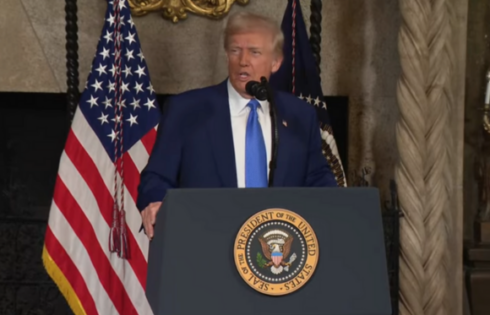
Dr. George Nash, author of the seminal book The Conservative Intellectual Movement in America Since 1945, recently spoke to college students at an Intercollegiate Studies Institute leadership retreat about the rise, faltering, and hopeful re-rise of conservatism in this nation.
Today there’s plenty of conservative commentary, ranging from the Tea Party movement to talk radio programs to best-selling books – yet the conservative movement appears fragmented and without a concrete identity, Nash said. Underscoring that is a lack of understanding of conservatism and its roots, he said.
Nash, who has a PhD in history from Harvard University and is an independent scholar and prolific writer, said it all begins with what he called the “three Renaissance conservatives,” or the libertarians, the traditionalists, and the anti-communists.
“Libertarian thought includes Art Laffer, Milton Friedman, Friedrich Hayek, Alan Greenspan, and Ayn Rand,” Nash said. “They had an influence on the American Right, such as Reagan’s economic policies and the current Republican Party’s tax cutting policy.”
Yet what Libertarianism could not resolve for some is what spawned the new conservative traditionalist, who desired a healthy and virtuous society, and a belief in classical law and the church.
“They wanted to reclaim the spiritual wasteland,” Nash explained. “Among them included Dr. Russell Kirk, author of A Conservative Mind, Edmund Burke, John Adams, and Alexis de Tocqueville.”
The final string of renaissance conservatism included anti-Communists, beginning with the Cold War.
“Thinkers such as Whittaker Chambers are a part of the anti-Communism thought,” Nash said.
These three Renaissance conservative groups merged to ward off the rise 20th century Liberalism they felt they needed to combat, but were still disjointed in their resistance, he said. They tried to come together, but they still wanted to maintain separate identities due to some of their divergent beliefs, he said.
Nash defined 20th century Liberalism as a bureaucratic welfare state that destroys personal property rights and is corrosive to liberties and ethical and spiritual foundations.
But in resisting the Left, conservatives have also started to share too much with the Left, he said, referring to conservatives who believe liberals are too powerful. So the conservatives, in response, mimic what the left does, in effect they’re RHINOs. Instead of trying to combat they Left, they’ve accepted some of their ideas.
That’s a mistake, he said. It was good fortune, for example, that William Buckley started National Review, embodying three values of “individual liberty, religious and decent behavior or ordered freedom, and no coercion.”
“William Buckley personified the three values and as a result produced National Review,” Dr. Nash said.
Buckley also combined the conservative thoughts in order to appear as a coalition, he added.
What became of conservatism was “fusionism” of all three original conservative thought strings, he said. Fusionism is the idea of bringing together unique thoughts of conservatism and combining them to create a balanced approach, or a single identity of conservatism.
“Fusionism combines the Libertarian and traditionalist views,” Nash said. “Frank Meyer noted that the traditions needed each other. Must be balanced and no extremes. People are free to choose and desire a path to virtue. Additionally, have a shared ideology of community.”
This idea of fusionism was central to the 1960s Barry Goldwater campaign to stretch across different boundaries, he said. Yet, the conservative thought was not done with diverting off each other, as next came neo-conservatism as well as the Religious Right, also known as social conservatism.
“Neo-conservatives include people such as Irving Kristol,” Nash said. “You have probably heard of a neo-conservative as a liberal who has been mugged by reality. Or as someone who cheers twice for capitalism but not three.”
“Neo-conservatism came about as a reaction to the New Left in the 1960s,” he said. “It wasn’t until the 1970s where they had consensus and a monopoly of prestige.”
On the other hand, the Religious Right movement began not as an intellectual movement but a grassroots campaign within the Protestant and Catholic subcultures.
“They shared economic values with the other conservative thoughts,” he said. “Social issues are the main concern and acquired value choices of individuals.”
Meanwhile, the three Renaissance conservatives – the foundations of conservatism – were not done developing themselves into different sects. Toward the end of the Cold War came the rise of paleo-conservatives, who are isolationists in a movement that has largely fizzled.
With the end of the Cold War, Nash said conservative’s coalition began splintering. Reagan managed to keep the conservative movement together by joining against Communism. Yet it seems almost impossible today to accomplish that feat within the GOP.
“Reagan gave each of them a seat at the table,” Dr. Nash said. “Now there is resistance. ‘Passions forge their fetters,’ as Edmund Burke said.”
All this infighting has forced conservatives to pick camps, and no one is willing to budge because no one is getting what they want.
But the little divisive issues should not divide conservatives, because all the camps believe in a free, virtuous, secure, and sustaining society, and that is what should bind them together, he said.
Fix contributor Aslinn Scott is a student at CU Boulder.
CLICK HERE to Like The College Fix on Facebook / TWITTER @CollegeFix





Please join the conversation about our stories on Facebook, Twitter, Instagram, Reddit, MeWe, Rumble, Gab, Minds and Gettr.